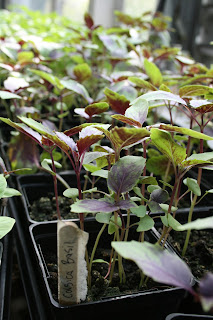The classes did an amazing job and mulched almost all of 2 huge sections of the garden! And this was despite the muddy conditions of "Lake Emery", as Eric, the Director of Urban Agriculture at PACT has been fittingly calling it.
We have gotten about double the amount of rain in April and May as we usually do. Due to the location of the garden, on a low lying field, rain water has completely soaked the garden, making for soggy, muddy beds. When the soil is this wet, it's not a good idea to use tools like shovels, or hoes to work the soil because doing so breaks down the soil's structure. There are channels dug from one end of the garden to the other to allow the rain water to flow through and out of the garden. A more permanent solution, such as burying pvc drainage pipes will likely have to be implemented.
So with this sun we are getting this week, we are eagerly watching the garden dry out, and using this period of much needed evaporation to pull as many weeds as possible out of the beds, in preparation for planting our hot crops: Hundreds of tomatoes, peppers, eggplants and more will be planted this week in the garden! Geography and World Issues classes pulled a small mountain of weeds out yesterday!
Although it's been one of the rainiest spring's on record, we have managed to seed quite a number of crops in April and May. Here's what's already been seeded and is sprouting at the Emery Garden: peas, carrots, beets, dill, swiss chard, fennel, spinach, onions, lettuce, kohlrabi, chicory, arugula, radish, mizuna, kale, cabbage, brocolli, collards, and celery. We've also transplanted many herbs in our spiral herb garden, and will be planting more at the ends of many of the beds to help deter pests and attract beneficial insects.
Map of Emery Garden (not to scale). It has over 130 beds and is the largest school yard garden in the GTA, if not all of Canada!
-Bonnie
P.S. A big THANK-YOU! to the two OISE student teachers who recently completed their placements and contributed a fantastic amount of hard work to the Emery Garden project and other PACT gardens: Wendy & Ben, thanks so much! I and the students will miss you.








